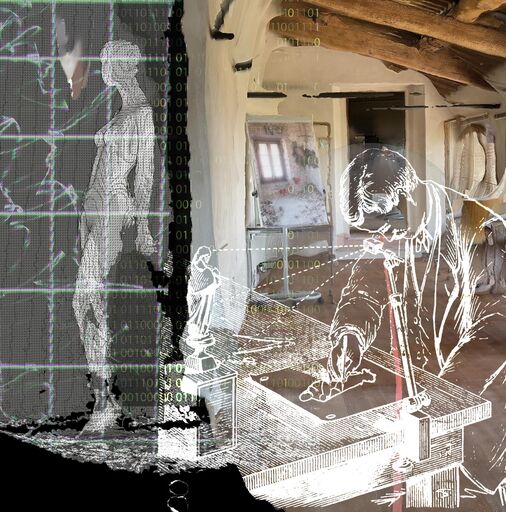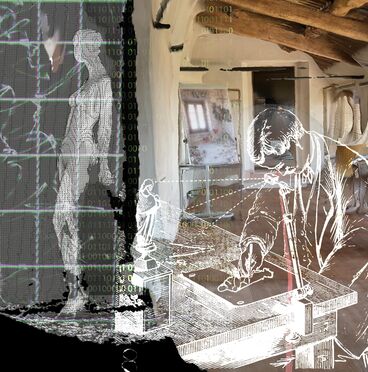Prof. Dr. Georg Trogemann
Realitätshybride

Subtitle: Erweiterte künstlerische Handlungsspektren auf Basis der technischen Adaption menschlicher Sinneswahrnehmung
Year: 0000
Categories: Text / Book / Print, dissertation
In this work the possibilities of the technical adaptation of human sensory perceptions are examined and suggestions are worked out how these can be made usable for the extension of the artistic action possibilities in contemporary productions. The starting point of the investigation is Jakob von Uexküll's functional circle of Merkwelt (perception) and Wirkwelt (action). This scheme allows to describe the different spaces of perception of humans, animals, including their technical adaptations, in a uniform way and to make them fruitful within artistic productions.
Based on Uexküll's concept of the term Umwelt, the cognitive representations of humans and animals (sensory perceptions in zoology) are examined and related to current imaging techniques (e.g., perception of bats and LiDAR scanners). These technical adaptations manipulate the perceptions (in Uexküll's sense, the Umwelt) of the recipients and thus also change their possibilities for action. These observations are contextualized with findings from cognitive science and related research fields (e.g., perceptual psychology, cybernetics) to make visible the mechanisms of human cognition. In particular, the Out of Body experiments of Henrik Ehrsson, as well as the interaction studies of Jeremy Bailenson and own experiments will be focused on. In order to make these observations relevant for artistic stagings, contemporary artistic works will be analyzed that already use technical adaptations of sensory perceptions and let them become part of a staging (e.g. Top Shot Helmet or Image Fulgurator by Julius von Bismarck).
Based on the discussed examples from the animal world, science and art, systematics for extended action spaces in contemporary stagings are finally designed and strategies for dealing with technically adapted perception are derived. Adapted perceptions become the core concept for the use of reality-hybridizing representational techniques that can signify an expansion of imaginative and action spaces.





